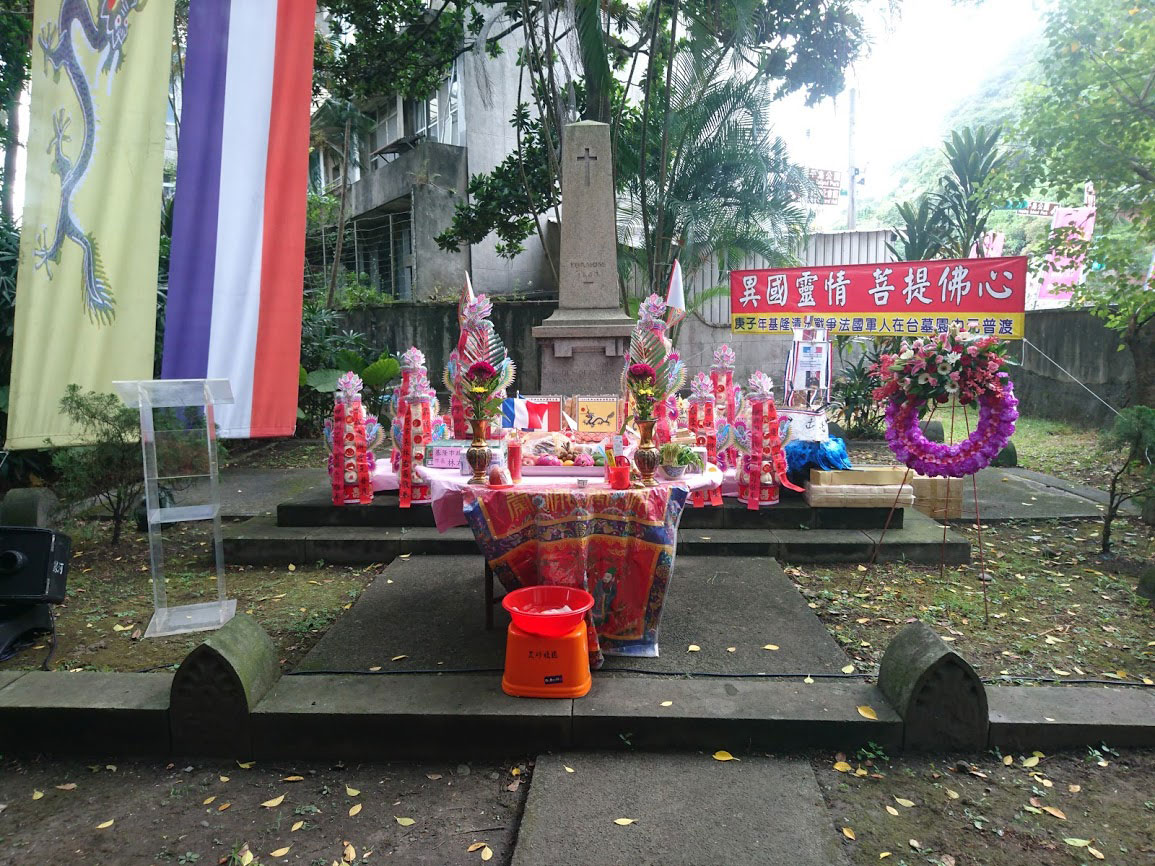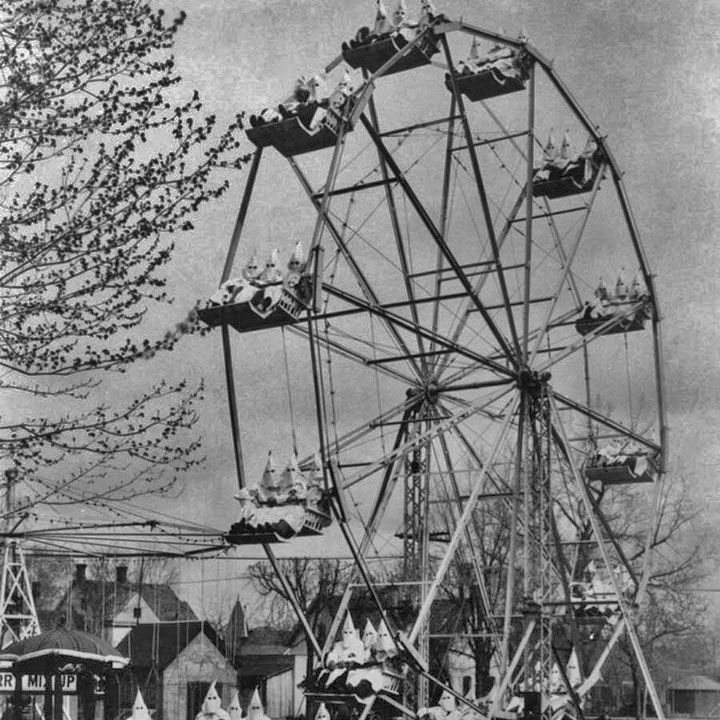- Location
- Arlington, Virginia
-
Hi Guest!
The costs of running this forum are covered by Sea Lion Press. If you'd like to help support the company and the forum, visit patreon.com/sealionpress
You are using an out of date browser. It may not display this or other websites correctly.
You should upgrade or use an alternative browser.
You should upgrade or use an alternative browser.
Things that look like alternate history but aren't
- Thread starter Meadow
- Start date
Alexander Rooksmoor
Well-known member
I know that square. I think you are right. When trams came to the city you did get a bit of a feel of a French city rather than an English one.
- Location
- Derbyshire
I know that square. I think you are right. When trams came to the city you did get a bit of a feel of a French city rather than an English one.
That and you've got those big blank spaces of wall to fill with massive banners of the party.
I found out recently that East Germany also came relatively close to keeping the black-white-red tricolour, or some variant of it.East Germany was so eager to portray itself as the "real" Germany, their uniforms are probably the closest OTL came to a surviving Third Reich aesthetic. I'm sure the irony wasn't lost on anyone.

Another weird almost-AH thing from OTL, related to military uniforms. There's a now-ubiquitous item of clothing, more commonly associated with Western civilization, which actually originated in the Sikh Empire, having been commissioned by Claude Auguste Court in his appointed task of modernizing the Kingdom of the Punjab's artillery divisions as part of the new standard uniform which all of its gunners would wear. Relatively mass-producible, durable and hard-wearing uniforms were needed, so it was decided that they'd still be made from the coarse, thick calico cloth known as Dungaree fabric, as before. However, since it was felt that these would lack sufficient regal poise to properly represent the wealth and bearing of the Sikh Raj (and the Napoleonic officers of the Fauj-i-Khas' 'French Regiment'), it was decided that the fabric for these uniforms would be woven using a 3/1 twill, and that the warp threads would be also dyed using the 'royal dye' of indigo (the primary export cash crop of its southern province of Multan).

These proved immensely successful, both with the troops and with the officers themselves. Feeling that the baggy, loose-fitting flannel or silk trousers typically worn by nobility in the Sikh Court was too soft for his tastes, Court adopted this new fabric for his own personal casual clothing, with General Ventura and several other members of the Fauj-i-Khas also following suit. And Jean-Baptiste Ventura, in particular, felt this type of clothing had great commercial potential, even more so than the Kashmiri shawls which were so in-vogue with the womenfolk when he'd brought them back with him on his diplomatic trip to London and Paris in 1838.
So much so that, even after being forced to depart the Punjab and return to Europe in late 1843 upon the dissolution of the Fauj-i-Khas, he decided to set up a major commercial enterprise producing this indigo-dyed, 3/1 twill-woven thick cotton fabric, in the primary metropolis of Bas-Languedoc, Nîmes. Unfortunately for Jean-Baptiste Ventura though, this textile venture proved far less lucrative and profitable than he'd hoped, especially with the raw materials needed to produce it entailing far higher expenses and overheads; gaining some local popularity, but failing to acquire the mass appeal farther afield which he'd hoped. As such, this commercial venture never managing to turn a profit, and wound up depleting much of the large fortune which he'd accumulated in the Sikh Raj.
However, even after his death in 1858, this textile factory and the fabric it produced, by then known as 'Serge de Nîmes' or in shorthand by the name of 'denim', still endured, having been bequeathed to his daughter Victorine (who'd been born in Lahore, and whose mother, Anna Moses, had an intriguing backstory of her own which isn't mentioned on wikipedia; not merely being 'of Armenian origin', but having been the daughter of one of the French officers in Begum Samru's army by his Armenian wife, with Victorine Ventura's aunt having also been the wife of Walter Dubuignon, Commander of Begum Samru's personal guard), along with the noble family she'd married into.
With Jean-Baptiste Ventura, the 'Count di Mandi', having become one of the most prominent generational role models for the European Jewish merchant community, it would be no surprise that the story of legendary adventures and exploits would spread even as far the Franconia region of the Kingdom of Bavaria in the German Confederation, from whence the Strauß family, one of its Jewish merchant families, would set sail across the Atlantic to establish dry goods businesses across America. And whilst the blue jeans craze which Ventura'd hoped to kickstart failed to materialize in France and across the rest of Europe during his own lifetime, it did wind up taking off in a big way over in the U.S of America.

If not for Court, Ventura, and the Sikh Fauj-i-Khas, this train of events would've almost certainly never happened; and blue jeans, along with all other items of denim clothing as we know them today IOTL, would almost certainly have never existed...

These proved immensely successful, both with the troops and with the officers themselves. Feeling that the baggy, loose-fitting flannel or silk trousers typically worn by nobility in the Sikh Court was too soft for his tastes, Court adopted this new fabric for his own personal casual clothing, with General Ventura and several other members of the Fauj-i-Khas also following suit. And Jean-Baptiste Ventura, in particular, felt this type of clothing had great commercial potential, even more so than the Kashmiri shawls which were so in-vogue with the womenfolk when he'd brought them back with him on his diplomatic trip to London and Paris in 1838.
So much so that, even after being forced to depart the Punjab and return to Europe in late 1843 upon the dissolution of the Fauj-i-Khas, he decided to set up a major commercial enterprise producing this indigo-dyed, 3/1 twill-woven thick cotton fabric, in the primary metropolis of Bas-Languedoc, Nîmes. Unfortunately for Jean-Baptiste Ventura though, this textile venture proved far less lucrative and profitable than he'd hoped, especially with the raw materials needed to produce it entailing far higher expenses and overheads; gaining some local popularity, but failing to acquire the mass appeal farther afield which he'd hoped. As such, this commercial venture never managing to turn a profit, and wound up depleting much of the large fortune which he'd accumulated in the Sikh Raj.
However, even after his death in 1858, this textile factory and the fabric it produced, by then known as 'Serge de Nîmes' or in shorthand by the name of 'denim', still endured, having been bequeathed to his daughter Victorine (who'd been born in Lahore, and whose mother, Anna Moses, had an intriguing backstory of her own which isn't mentioned on wikipedia; not merely being 'of Armenian origin', but having been the daughter of one of the French officers in Begum Samru's army by his Armenian wife, with Victorine Ventura's aunt having also been the wife of Walter Dubuignon, Commander of Begum Samru's personal guard), along with the noble family she'd married into.
With Jean-Baptiste Ventura, the 'Count di Mandi', having become one of the most prominent generational role models for the European Jewish merchant community, it would be no surprise that the story of legendary adventures and exploits would spread even as far the Franconia region of the Kingdom of Bavaria in the German Confederation, from whence the Strauß family, one of its Jewish merchant families, would set sail across the Atlantic to establish dry goods businesses across America. And whilst the blue jeans craze which Ventura'd hoped to kickstart failed to materialize in France and across the rest of Europe during his own lifetime, it did wind up taking off in a big way over in the U.S of America.

If not for Court, Ventura, and the Sikh Fauj-i-Khas, this train of events would've almost certainly never happened; and blue jeans, along with all other items of denim clothing as we know them today IOTL, would almost certainly have never existed...
LSCatilina
Never Forget Avaricon
- Location
- Teuta Albigas - Rutenoi - Keltika
- Pronouns
- ēs/xsi
- Location
- Derbyshire
I think technically the legally correct way if showing the Habsburg dominions after 1866
Hungarian map, published after the Second Balkan War, but before, or very early into, the Great War? So 1913-14?
Kudos for the bizarre flag of "Angol", which I assume is an attempt at the red ensign. Further plaudits for a truly mad selection of countries in that box, including Honduras and Costa Rica while leaving out somewhere like Spain.
Kudos for the bizarre flag of "Angol", which I assume is an attempt at the red ensign. Further plaudits for a truly mad selection of countries in that box, including Honduras and Costa Rica while leaving out somewhere like Spain.
Last edited:
- Location
- Arlington, Virginia
- Location
- Arlington, Virginia
While we're in Taiwan:
The heroes of the French conquest of Formosa (1885) rest in the military graveyard of Kilung, where their memory is jointly honored every year by the island's colonial authorities and representatives of the Qing court.

The heroes of the French conquest of Formosa (1885) rest in the military graveyard of Kilung, where their memory is jointly honored every year by the island's colonial authorities and representatives of the Qing court.

The Queen and Prime Minister McAleese greet foreign leader David Cameron on his visit to Ireland:


- Location
- NYC (né Falkirk)
- Pronouns
- he/him
4/10 no reference to Ceannard Cameron (Saighdearan na Fàidh) and First Minister McAleese (Irish National Party).The Queen and Prime Minister McAleese greet foreign leader David Cameron on his visit to Ireland:

Bonniecanuck
DIEF WILL BE THE CHIEF AGAIN
- Location
- Formerly Hong Kong, currently London
- Pronouns
- she/her + they/them
The Pepsi and Singapore Airlines Concorde.




- Location
- Coventry
Marshall Plan posters are good for unexpected flags.
View attachment 69657
On the left we have the Free Territory of Trieste (at least with the right colour, unlike the one on the more famous 'windmill' poster) and on the right we have un-outlined Norway, coat of arms-less Portugal, Czechoslovakia and Poland (this may have been at an early stage when it was thought they would be allowed to go for it) and, most curiously of all, the Red Ensign used to represent Britain.
This reminds me that upon its foundation, NATO had an old Imperial German Navy Battlecruiser in it.
Last edited:
That's very interesting, thanks for posting.Another weird almost-AH thing from OTL, related to military uniforms. There's a now-ubiquitous item of clothing, more commonly associated with Western civilization, which actually originated in the Sikh Empire, having been commissioned by Claude Auguste Court in his appointed task of modernizing the Kingdom of the Punjab's artillery divisions as part of the new standard uniform which all of its gunners would wear. Relatively mass-producible, durable and hard-wearing uniforms were needed, so it was decided that they'd still be made from the coarse, thick calico cloth known as Dungaree fabric, as before. However, since it was felt that these would lack sufficient regal poise to properly represent the wealth and bearing of the Sikh Raj (and the Napoleonic officers of the Fauj-i-Khas' 'French Regiment'), it was decided that the fabric for these uniforms would be woven using a 3/1 twill, and that the warp threads would be also dyed using the 'royal dye' of indigo (the primary export cash crop of its southern province of Multan).

These proved immensely successful, both with the troops and with the officers themselves. Feeling that the baggy, loose-fitting flannel or silk trousers typically worn by nobility in the Sikh Court was too soft for his tastes, Court adopted this new fabric for his own personal casual clothing, with General Ventura and several other members of the Fauj-i-Khas also following suit. And Jean-Baptiste Ventura, in particular, felt this type of clothing had great commercial potential, even more so than the Kashmiri shawls which were so in-vogue with the womenfolk when he'd brought them back with him on his diplomatic trip to London and Paris in 1838.
So much so that, even after being forced to depart the Punjab and return to Europe in late 1843 upon the dissolution of the Fauj-i-Khas, he decided to set up a major commercial enterprise producing this indigo-dyed, 3/1 twill-woven thick cotton fabric, in the primary metropolis of Bas-Languedoc, Nîmes. Unfortunately for Jean-Baptiste Ventura though, this textile venture proved far less lucrative and profitable than he'd hoped, especially with the raw materials needed to produce it entailing far higher expenses and overheads; gaining some local popularity, but failing to acquire the mass appeal farther afield which he'd hoped. As such, this commercial venture never managing to turn a profit, and wound up depleting much of the large fortune which he'd accumulated in the Sikh Raj.
However, even after his death in 1858, this textile factory and the fabric it produced, by then known as 'Serge de Nîmes' or in shorthand by the name of 'denim', still endured, having been bequeathed to his daughter Victorine (who'd been born in Lahore, and whose mother, Anna Moses, had an intriguing backstory of her own which isn't mentioned on wikipedia; not merely being 'of Armenian origin', but having been the daughter of one of the French officers in Begum Samru's army by his Armenian wife, with Victorine Ventura's aunt having also been the wife of Walter Dubuignon, Commander of Begum Samru's personal guard), along with the noble family she'd married into.
With Jean-Baptiste Ventura, the 'Count di Mandi', having become one of the most prominent generational role models for the European Jewish merchant community, it would be no surprise that the story of legendary adventures and exploits would spread even as far the Franconia region of the Kingdom of Bavaria in the German Confederation, from whence the Strauß family, one of its Jewish merchant families, would set sail across the Atlantic to establish dry goods businesses across America. And whilst the blue jeans craze which Ventura'd hoped to kickstart failed to materialize in France and across the rest of Europe during his own lifetime, it did wind up taking off in a big way over in the U.S of America.

If not for Court, Ventura, and the Sikh Fauj-i-Khas, this train of events would've almost certainly never happened; and blue jeans, along with all other items of denim clothing as we know them today IOTL, would almost certainly have never existed...
A somewhat similar one I came across was that (as far as I can tell) singing national anthems before sports games, a now near-universal practice across the Western world, originated because New Zealanders were doing the Maori haka and others felt they needed to respond with something. So in other words, the Maori have had a vast, unintentional impact on Western culture in a way so subtle that everyone just assumes it was always that way.
Beata Beatrix
Camille Paglia on Judge Dredd
- Location
- Portland, OR
- Pronouns
- she/her/hers
One of my favourite ridiculous coincidences - any student of modern British politics knows that a key moment in the revival of the Liberals under the Liberal-SDP Alliance was the victory of S. Hughes in the Bermondsey by-election, 1981. If AH forums had existed in the 1970s, however, their members might have been discussing "What if the Liberal candidate, S. Hughes, won the Bermondsey by-election?"
LSCatilina
Never Forget Avaricon
- Location
- Teuta Albigas - Rutenoi - Keltika
- Pronouns
- ēs/xsi

"Napoléon IV" silver 5 Francs of 1874, seemingly a mock trial made in Belgium




